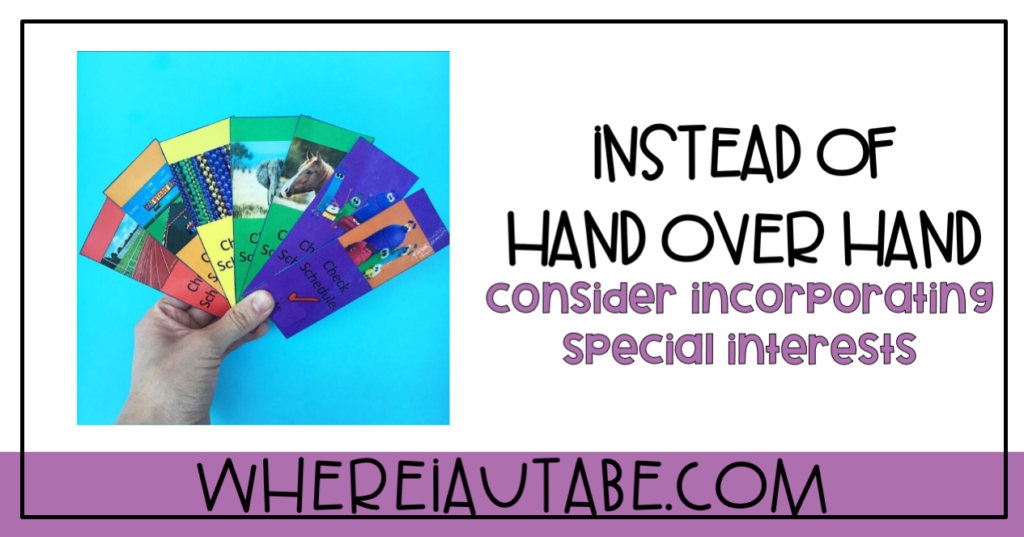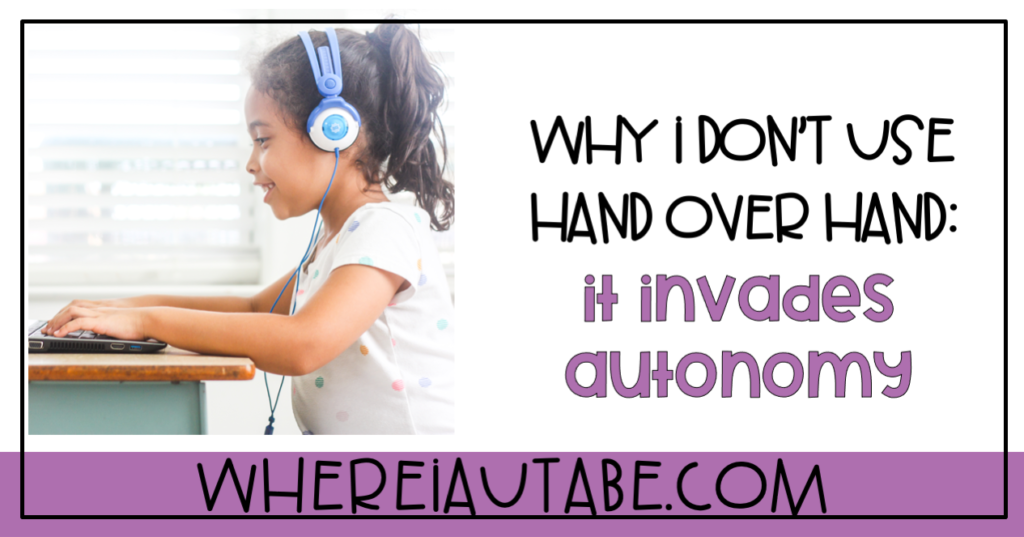A hand over hand prompt is known as a full physical prompt. Meaning you take your hand and place it over a child’s hand to help complete a task. For example, assisting students with writing by placing your hand on top of theirs to write. Or placing your hand on top of another child’s hand to help them put their folder in their backpack. Full disclosure, I used these prompts frequently throughout my first few years of teaching. It wasn’t until recently that I realized how invasive and problematic this prompt can be. Are there instances where it may still be useful or necessary? Maybe. However, with most students, I now see very little value to these prompts. Below I’ve listed 3 reasons why I don’t use this prompt.
1. Hand Over Hand Teaches Dependency
If you are using hand over hand for a child to complete a task or skill, who is actually completing this skill? Not the child. What does the student learn from you essentially doing it for them? Perhaps that they cannot or do not have to do it on their own. I understand that intentions are often to be helpful, however, this form of helping can teach dependency.

2. It Invades Autonomy
The first time I started hearing about this I cringed. Mainly because there have been many times where I insert a hand over hand prompt because I think it’s necessary. But this is forceful and I no longer think this in the slightest. We have to remember that when we use a hand over hand prompt, students no longer have control of their own body and space. Especially when they can not/do not communicate or advocate effectively. So even if they pull away their hand and you come back with the same physical prompt, what message is this sending? That they don’t have a say to their own body. Remember, a child displaying or saying “no” IS an appropriate response! It be not be the one you want to hear, but it is appropriate.

3. It Does Not Encourage Intrinsic Motivation
If a student is intrinsically motivated, they are more likely to WANT to do the task or activity you place before them. Instead of inserting a full physical prompt, ask yourself if special interests can be incorporated to help increase intrinsic motivation.
Here are a few more questions to think about before the next time you use this prompt:
Is the task too much? Can we take a step back and use task analysis to teach a foundational or prerequisite skill? There are less intrusive prompts in the prompt hierarchy. Can we use an alternate prompt? Are there special interests we can incorporate to increase that intrinsic motivation? Is hand UNDER hand an option which is slightly less intrusive?
When I first started talking about this topic, many teachers and parents expressed that hand over hand prompts are or were necessary in their child’s development. I do see some (very few) cases where it may be beneficial. I am not at all an expert on this. But I am a teacher who is willing to learn more about best practices in working with students with disabilities and I hope someone reading this can learn more about this perspective too!
If you like this special education teacher content, be sure to check out my other blogs with special education teacher tips too!
Happy teaching!
Sofie








